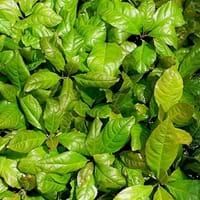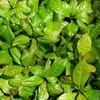Life Span
Perennial
Annual
Type
Broadleaf Evergreen
Perennial
Origin
China, Japan
South Africa
Types
Not Available
Shasta Daisy
Gloriosa Daisies
Painted Daisy
Pyrethrum Daisies
Number of Varieties
Not Available
Habitat
Not Available
gardens, Grassland
USDA Hardiness Zone
7-9
10-11
AHS Heat Zone
Not Available
6-1
Sunset Zone
Not Available
8, 9, 12, 13, 14, 15, 16, 17, 18, 19, 20, 21, 22, 23, 24
Habit
Thicket/Colonizing
Clump-Forming
Flower Color
Light Pink
White, Yellow, Blue, Purple, Orange, Pink, Magenta
Flower Color Modifier
Not Available
Bicolor
Fruit Color
Red
Not Available
Leaf Color in Spring
Dark Green
Green, Blue Green
Leaf Color in Summer
Dark Green
Green, Blue Green
Leaf Color in Fall
Dark Green
Green, Blue Green
Leaf Color in Winter
Dark Green
Light Green
Leaf Shape
Alternate
Arrowhead
Plant Season
Spring, Summer, Fall, Winter
Spring, Summer, Fall
Sunlight
Partial shade, Full Shade
Full Sun
The pH of Soil
Acidic
Neutral
Soil Drainage
Well drained
Well drained
Bloom Time
Summer
Late Spring, Early Summer, Summer, Late Summer, Early Fall, Fall
Tolerances
Not Available
Drought
Where to Plant?
Container, Ground
Ground, Pot
How to Plant?
By dividing rhizomes, tubers, Seedlings, Semi-hardwood cuttings
Seedlings, Stem Planting
Plant Maintenance
Medium
Medium
Watering Requirements
Average Water Needs, Do Not over Water
Allow soil to be completely dry in between waterings, It cannot sustain wet-feet, Keep the ground moist but not water-logged, Water in morning to avoid prompting diseases, Water twice a day in the initial period
In Summer
Average Water
Lots of watering
In Spring
Less Watering
Moderate
In Winter
Moderate
Average Water
Soil Drainage Capacity
Well drained
Well drained
Sun Exposure
Partial shade, Full Shade
Full Sun
Pruning
Prune after harvesting
Cut or pinch the stems, Prune regularly, Remove deadheads
Fertilizers
All-Purpose Liquid Fertilizer
All-Purpose Liquid Fertilizer
Pests and Diseases
Not Available
Red blotch
Plant Tolerance
Not Available
Drought
Flowers
Insignificant
Yes
Flower Petal Number
Single
Single
Foliage Texture
Medium
Medium
Foliage Sheen
Glossy
Not Available
Attracts
Not Available
Bees, Butterflies
Allergy
Not Available
Not Available
Aesthetic Uses
Ground Cover, Showy Purposes
Beautification, Bouquets, Showy Purposes
Beauty Benefits
Not Available
Not Available
Environmental Uses
Provides ground cover
Air purification
Medicinal Uses
Not Available
Cold, Cough, Stomach pain
Part of Plant Used
Flowers, Fruits
Flowers
Other Uses
Not Available
Showy Purposes, Used as Ornamental plant
Used As Indoor Plant
No
Yes
Used As Outdoor Plant
Yes
Yes
Garden Design
Container, Edging, Foundation, Groundcover, Mixed Border, Rock Garden, Wall
Bedding Plant, Container, Cutflower, Foundation, Groundcover, Hanging Basket, Mixed Border, Rock Garden, Wall
Botanical Name
ARDISIA japonica
OSTEOSPERMUM
Common Name
Japanese Ardisia, Marlberry
African daisy or Blue-eyed Daisy
In Hindi
Japanese Ardisia
अफ्रीकी डेज़ी
In German
Japanese Ardisia
African Daisy
In French
Japanese Ardisia
marguerite africaine
In Spanish
Ardisia japonica
margarita africana
In Greek
Japanese Ardisia
Αφρικανική μαργαρίτα
In Portuguese
Japanese Ardisia
africano margarida
In Polish
Japanese Ardisia
Gerbery
In Latin
Japanese Ardisia
African primula
Phylum
Magnoliophyta
Anthophyta
Class
Magnoliopsida
Magnoliopsida
Family
Myrsinaceae
Asteraceae
Genus
Ardisia
Osteospermum
Clade
Angiosperms, Asterids, Eudicots
Angiosperms, Asterids, Eudicots
Tribe
Not Available
Calenduleae
Subfamily
Not Available
Asteroideae
Number of Species
Not Available
Not Available
Season and Care of Japanese Ardisia and African Daisy
Season and care of Japanese Ardisia and African Daisy is important to know. While considering everything about Japanese Ardisia and African Daisy Care, growing season is an essential factor. Japanese Ardisia season is Spring, Summer, Fall and Winter and African Daisy season is Spring, Summer, Fall and Winter. The type of soil for Japanese Ardisia is Loam and for African Daisy is Loam while the PH of soil for Japanese Ardisia is Acidic and for African Daisy is Neutral.
Japanese Ardisia and African Daisy Physical Information
Japanese Ardisia and African Daisy physical information is very important for comparison. Japanese Ardisia height is 30.45 cm and width 60.95 cm whereas African Daisy height is 15.20 cm and width 45.70 cm. The color specification of Japanese Ardisia and African Daisy are as follows:
Japanese Ardisia flower color: Light Pink
Japanese Ardisia leaf color: Dark Green
African Daisy flower color: White, Yellow, Blue, Purple, Orange, Pink and Magenta
- African Daisy leaf color: Green and Blue Green
Care of Japanese Ardisia and African Daisy
Care of Japanese Ardisia and African Daisy include pruning, fertilizers, watering etc. Japanese Ardisia pruning is done Prune after harvesting and African Daisy pruning is done Cut or pinch the stems, Prune regularly and Remove deadheads. In summer Japanese Ardisia needs Average Water and in winter, it needs Moderate. Whereas, in summer African Daisy needs Lots of watering and in winter, it needs Average Water.



